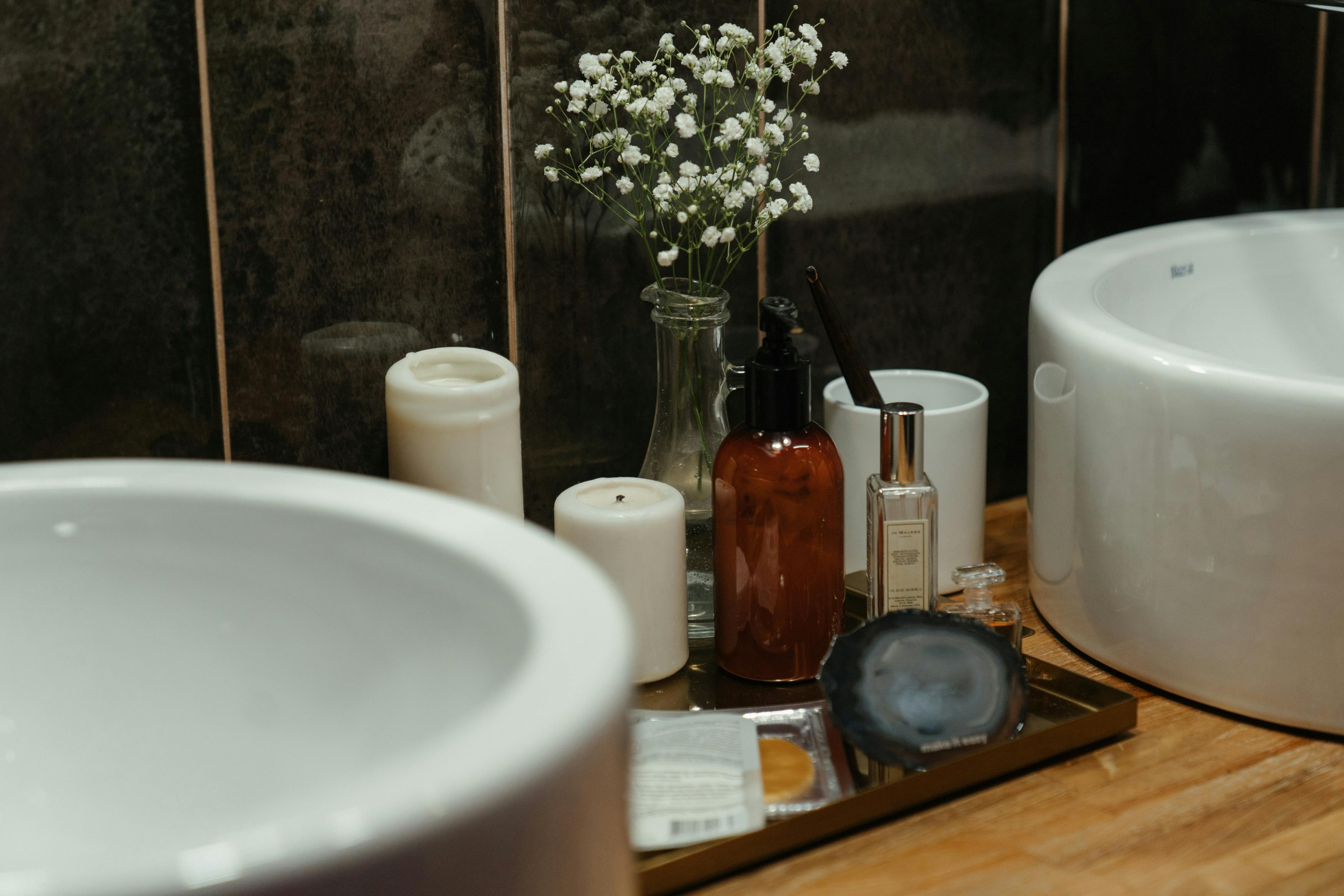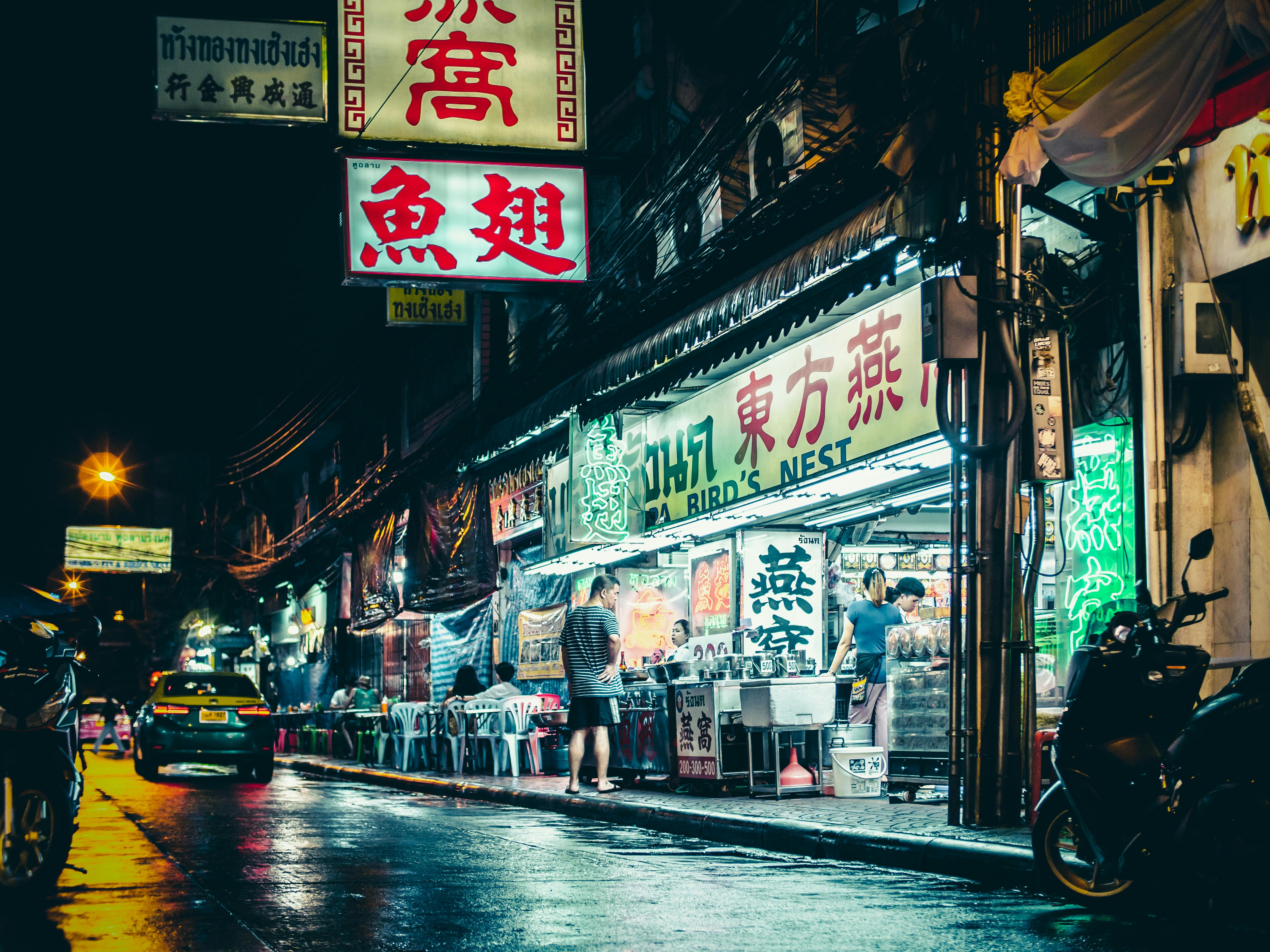5 principles of interior design for companies
There is only one goal in every designer’s mind when creating an interior design for a store. That goal is to attract as many customers as possible and influence them enough that customers are willing to part with their money.
Right now, there are many ways to do interior design for a retail store, but based on our 20 years of experience in doing various types of interior design for stores, no matter what the design is, when you want your interior design to be able to attract customers, you have to have these 5 Important Design Principles for a Store:
1. Eye-catching product display
One of the most important points when designing the interior of a store is the Store Entrance. Why? Because not all potential customers will suddenly appear inside your store (you’ll freak out if they do), and they all start in the same place: The Entrance. From there, they will subconsciously judge whether this store is worth entering or not.
This is where the “Power of Visual Merchandising” shines the most. The reason is because what subconsciously affects the customer’s judgment is the layout of your store entrance and, more importantly, the products you display at the front of the store. By displaying the right products in front of your store, when potential customers come by and see them, they will be more likely to come into your store because they now know that you sell the products they need.
Now the problem is how you can decide which product to show. Speaking from experience, the way you organize and display your Display product should be able to tell a story and convey a message to your potential customers. By doing this correctly, the potential customer will be more interested in your store compared to other stores that sell the same type of products.
2. Use all 5 senses
As humans, we use the 5 senses perceive the conditions around us. So, in order to attract customers more easily, you need to make your products and interior design appealing to all 5 senses of your customers. Of course, depending on the type of business, one way or two ways can’t be used, but the point is that you have to maximize arrangements and attraction in the interior design of your store so that people can be attracted to your store more easily.
Below are some of the examples of how we can use the 5 customer senses based on our experience:
- Vision: This is the easiest sense to affect. There are numerous ways to attract customers using this sense, from using colors, to changing the intensity of lighting in your store, to simply arranging products in your store. When done right, you can even adjust which products the customer will focus on and how long they will stay in a section of your store.
- Sound: There are multiple ways to affect this sense. People’s conversation, background music, even the sound around you can affect your perception. For example, younger people tend to be drawn to shopping at a place where upbeat music is played, while older people generally like a store where soft or classical music is played.
- Play: The sense of touch is a very important thing when you are doing Interior Design. People will be more likely to buy something when they can try it out first. For example, there are 2 stores that sell mobile phones. One of them allows the customer to try it on the spot with security measures, the other prohibits the customer from trying the product and can only see it. From which of these two stores would you want to buy a mobile phone? Generally, people will choose the former. This is why the sense of touch is an important factor in the Interior Design of a store.
- Smell: Believe it or not, there’s a whole science to what’s known as “scent marketing,” with several studies and real-world case studies of global brands like Samsung, Sony, and Verizon applying it to their advantage. The reason is that smell is considered to be a fast track to the brain system that controls both emotion and memory, two big factors behind why we choose one brand over another.
- Taste: This meaning is mainly used in the Consumables Department. When you give people the opportunity to try a sample of the products you sold, they will be much more inclined to buy it. This is why usually in a place that sells consumables, there is a section dedicated to free samples.
3.Product management
In order for our store to look good, we must keep the interior of our store clean and tidy. This is especially important for small shops, where things can easily get dirty. The easiest way to avoid this is to perform product and decoration management for our products. One of the most famous principles in retailing is “Retailing is detail.” Therefore, in order to manage all your products at a satisfactory level, you must pay attention to every detail.
Don’t just randomly place your products due to lack of space or motivation, but take some time to gather your products and see which product pairs well with which. In this way, you can also create a space that allows you not to place your products too close to each other.
You can also separate your products using elevation so you can make the customer focus on which product you want them to buy. To do this, place the products you want the customer to focus on at eye level. In our experience, customers tend to pay more attention to products that catch their eye than to products that are above or below their view.
4. Control your customers
To make your customer explore as much of your product as possible, the best way to do it is to design a path in the Interior Design of your store. The route usually varies according to the size of the store and the products sold.
The first thing to remember when you decided to make a path in your Interior Design: Do it counterclockwise. Why? Because according to research on customer behavior in the store, almost 90% of people tend to go to the right after entering a store. So what we need to do is make use of this habit and make sure that while they’re at it, they also continue to walk around your store to get maximum exposure for your products. The more products you can expose them to, the more likely they are to buy one of them.
By taking a tour of the store, you will also be able to control the flow of customers. Also, if you know how to do this correctly, you can make them focus on what product you want, go to a section of your store, and much more. Keep in mind that if you want to use the path to lead them somewhere, it is better if you put an eye-catching and attention-grabbing display at the end of the path so that customers are attracted to it.
Most stores use a right-hand loop path for customers to walk to the back of the store and back to the front again. Some will make it even easier by covering the path with a different texture or look than the general flooring, paying homage to the old saying “where the eyes go, the feet will follow”.
5. Satisfy your customer
This is possibly the most important point when you want to carry out an Interior Design for any business. I guess I don’t need to say WHY Making every customer that comes to your store happy is important to every business. But there’s a need to explain WHAT we can do it. Therefore, we will give you some points to take note of based on our experiences:
- Product location: When organizing your product, be sure to put a sign above each category of your product. Sign makes it easier for people to find the things they need, and you can also use it to track your habit. See which products they like the most and which products are selling the least. Then you can change your next product order according to the result of your research to maximize profits. People will also feel that they can quickly find the things they want, unlike other stores that did not provide any signs, so when they want to buy something again, they are likely to prefer your store.
- Don’t block the flow of traffic: Your store should be easy to navigate and have enough space for multiple people to be in it at once without bumping into each other. Make sure your aisles are wide enough for at least two people to walk through without bumping into each other.
- Provide seating area: People often went shopping in groups. In a group, not everyone wants to buy the same things. Sometimes when they walk into a store, only part of the group wants to buy something. The others just wait. In this case, when they see a rest area, or at least some chairs, then they can rest there. Sometimes when they look around from their spot, they see something they like, and they will go there and browse. If there is no seating area, people will just walk out and you won’t get a new customer. Therefore, it is essential to provide a seating area in your tent, or at least some chairs.
- Adjust lighting: Pay attention to lighting. Well thought out and well placed lighting will draw attention to your store’s displays and merchandise, showcase your products and even make them more attractive than they really are. Make sure to adjust it so that every place in your store has enough lighting, including the corners or your store. But be careful, supplying too much light will have negative effects. Don’t forget to mix uplight and downlight in your store. When a downlight element is added to the uplight, buyers will perceive the atmosphere as brighter and more comfortable.
conclusion
Interior design for retail and stores is a never-ending process. Each person has their own likes and dislikes, so there is no such interior design template.
The only thing you can do is stick to these 5 Principles of Interior Design for your store, then slowly observe your customers’ behavior and habits to get to know them better, then see what they like and don’t like about your customers. products.
Don’t forget to memorize their movement pattern and behavior as well, so that you can try several different arrangements and choose the most optimal interior design for your personal store.
Keep your 5 senses open and you can create an interior design that is good for both you and your clients.


